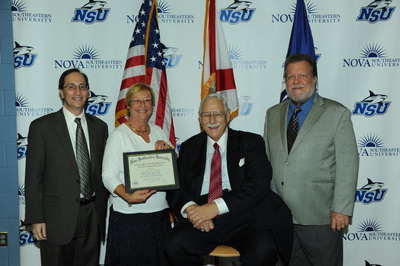To Remove the Hook or Not: Degradation Rates of Fishing Hooks
Grant Winners
- David Kerstetter, PhD – Oceanographic Center
- Robin Sherman, PhD – Farquhar College of Arts and Sciences
Deans
- Richard Dodge, Ph.D. – Oceanographic Center
- Don Rosenblum, Ph.D. – Farquhar College of Arts and Sciences
Abstract

The fate of fishing hooks in the marine environment is a persistent management question that remains scientifically unanswered, despite numerous anecdotal observations in popular recreational magazines. Thousands of fishing hooks are lost through normal commercial and recreational fishing activities per year. If lost fishing hooks do not degrade quickly, they may contribute to long-term marine debris and may also have the potential for metal toxicity if embedded in released fishes for long periods of time. This proposed research addresses two specific questions: one, what are the dissolution rates for 12 representative fish hook models commonly used in Florida Straits and Gulf of Mexico recreational and commercial fisheries, and two, what are the implications of these dissolution rates on whether to release fishes with embedded hooks. Work would occur in both a laboratory setting to evaluate hook degradation via three standard industrial evaluation techniques (weight loss, electrical resistance, mechanical strength testing) in three simulated fish body solutions (two stomach and one plasma) of varying pH levels and in situ with hooks in a simulated hooking environment in full-strength seawater at the OSC boat basin. Outside metal composition testing will also be used in conjunction with the degradation results and literature reviews to evaluate the potential for metal toxicity in released fishes, potentially leading to further research. The project is a collaboration between the Oceanographic Center and the Farquhar College of Arts and Sciences, and it will include an undergraduate student as a major participant in the field and laboratory research.